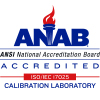
In the healthcare, pharmaceutical, and food industries, warehouse monitoring and mapping are essential to the safety and production of a company. Warehouse mapping offers an organized method to storing product and preventing error by identifying critical hazard zones within a facility.
For an optimal warehouse site, it is necessary to create and map a well-constructed layout. The following refers to basic terms and stages that assist in the formation of a highly efficient warehouse mapping plan.
Initial Steps:
The first step of warehouse mapping includes gathering all information relevant to the warehouse. This includes dimensions, layouts and drawings, HVAC plans, current organizational methods, and exterior/interior materials.
Data Loggers:
Providing an efficient way to collect data for analysis, data loggers for warehouse monitoring will measure, record, and wirelessly transmit data for real-time monitoring. The number of data loggers in a warehouse are dependent upon the warehouse volume. Data loggers should be on each floor of the warehouse, ensuring an even distribution.
Understanding the layout of the warehouse is vital. For example, any type of storage or product located near outside walls, entrances, or ceilings could be susceptible to exterior conditions. Putting a logger or sensor close to these areas will guarantee accurate readings and post analysis.
Mapping & Monitoring:
Mapping refers to the recording of climate and temperature conditions in order to find and identify where products should and should not be stored. Mapping is critical to the formation and layout of a warehouse due to temperature inconsistencies such as opening and closing doors, high shelving, and the amount of exposure to sunlight.
These factors could impose a dangerous threat to pharmaceutical products, for example, where exposure to a certain amount of heat could leave the products ineffective. These areas are often called “problem spots” and require specific attention.
Recording these conditions should be conducted long enough to show certain trends. According to most industry requirements, the study should be recorded for at least three consecutive days. MadgeTech’s RHTemp101A data logger assists in the monitoring of temperature and humidity trends within a warehouse, providing up to 1,000,000 readings per channel and measuring temperatures -40 °C to 80 °C.
Data Collection:
After the warehouse data has been sufficiently documented, it may become clear that certain aspects of the warehouse will need adjustments. This can be viewed and analyzed with data logging software. For example, MadgeTech’s Data Logger Software provides users with the ability to mark desired points of time on any report, use multiple parameter graph reports, and export all information into a spreadsheet, where the data can be stored and saved internally or externally.
Reporting:
Reporting the analysis includes creating a document that outlines the problematic areas, all obtained results of the study, and a summary with drawn conclusions of relevant information. Identifying risks and making necessary changes to avoid them can determine the future placement of loggers throughout the warehouse.
Proper reporting ensures a safe warehouse environment and is essential to industries who are required to meet certain compliance guidelines.
For more information on warehouse mapping and how data loggers can be of use for your next warehouse mapping plan, please contact [email protected]






